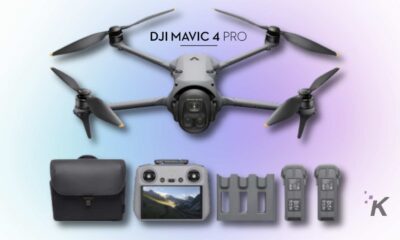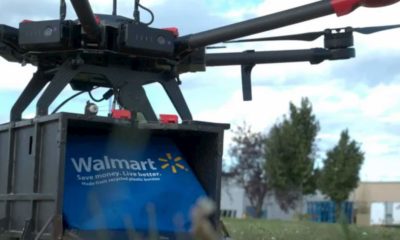#DroneTechie
Skydio’s $2500 ‘self flying’ drone has to be the coolest thing out right now
Self-flying camera aims to impress.
Just a heads up, if you buy something through our links, we may get a small share of the sale. It’s one of the ways we keep the lights on here. Click here for more.
Skydio, a robotics startup, announced that they would be selling a new drone called the R1, which will “promote a self-flying camera.” Interested yet? I am.
Skydio is attempting to challenge drone-powerhouse DJI, which has cornered off the consumer drone market. If you are looking for a drone, the best place to look is at DJI products. There have been tons of companies that have tried to rival DJI, like GoPro but have failed to keep up with DJI’s lead and industry demand.
Skydio’s CEO and co-founder, Adam Bry, recently told Quartz:
“We wanted to create something that is easy to use. Many of the best consumer drones on the market today, including DJI, still require complicated apps or dedicated remoted to fly properly. They’re fiddly and often not particularly easy to wrap your head around, especially if you’re a newbie in drone flying.”
I can attest to this. I tried to fly a DJI drone my friend had at the park, and I only used it for about 10 seconds before promptly crashing it back to earth. They are difficult to control!
Bry and his co-founders met as graduate students at MIT in 2007, and have been working on automatic flying systems for over ten years. His last project before focusing on Skydio was building a modern airplane that could operate on its own. The R1 is a combination of Bry and his team’s research in the field and years of research. The team’s main desire is to get the best aerial footage, along with a smooth app.
“If you can use the camera app on your phone, you can use a drone” Adam Bry, Skydio CEO and co-founder.
The R1 is designed to take off from your hand, find you, track you, and fly on its own without any programming or commanding. In the drone app, you can designate the R1 to follow you from the front or back, along with following other people. It’s mostly a film crew that follows you around on command.
The drone is equipped with 13 cameras, one 4K camera for recording and 12 positioned around the drone that is designated to scan the world around it. Bry has said that his team has built a drone that can fly autonomously around objects and understand the difference between different obstacles, like a pole or a person. Inside there is a particular NVIDIA chip that is currently being used in autonomous car research to process the environment in real-time. Honestly, there is robust state of the art technology in the R1.
On top of the already impressive introduction product, Skydio secured a $42 million investment from Series B venture firms like Andreessen Horowitz and Playground Global. Playground Global is a company with funds from Andy Rubin, the creator of the Essential phone and creator of Android. Chip maker NVIDIA also invested in the business.
Skydio’s R1 is not cheap. The R1 is available today for $2,500. Bry has said that it is not a main-stream drone, and is not at a mass market price point. The R1 was built in the US because they wanted the highest quality parts available, including durable carbon fiber and aluminum that makes the drone’s body. The drone will fit in almost any backpack that can fit a 17-inch laptop.
However, most of DJI’s drone, like the newly, released Mavic Air and the popular Spark, can do most of what the R1 can do, and is almost 6x as cheap. At the $2,500 price point, R1 is competing with DJI’s profession grade drones, like the Inspire 2. The Inspire 2, comparably, has higher resolution cameras, faster speeds, and can fly further away from the controller. The R1 has a range of 300 feet where the Inspire 2 has a range of 4 miles. Again, an impressive difference that doesn’t lean well with Skydio.
Regardless of the numbers, Skydio is a cool product that is attempting to offer a different product rather than completely rip off DJI. I can appreciate that.
Disclosure: Skydio was a past client of EZPR, a media relations firm where Kevin, KnowTechie’s editor-in-chief, holds a position. However, he did not participate in this post’s writing, editing, or publishing. He remains unbiased and independent in his role at KnowTechie.































